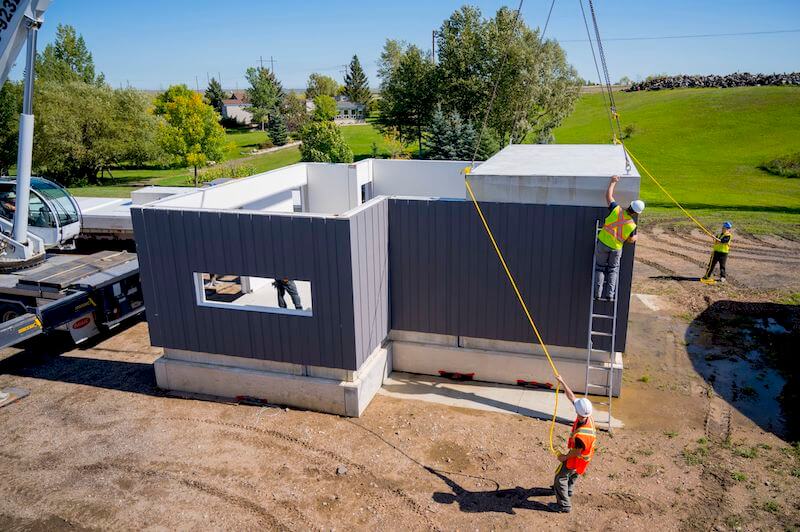Architects and contractors working in the far north, where the building season is short and the risk of water damage to building materials is high, have talked for some time about the transformative promise of modular construction.
Instead of slow on-site assembly, components like wall panels can be pre-fabricated in climate-controlled plants, then shipped and assembled quickly to prevent water damage and reduce the risk of thermal gaps.
So perhaps it’s not surprising that Nexii Building Solutions, a Vancouver-based pre-fab materials firm that recently raised $10 million in venture capital and brought on Vancouver’s high-profile former mayor, Gregor Robertson, originates with a pair of inventors in chilly Moose Jaw, Saskatchewan.
Last year, brothers Ben and Michael Dombowsky filed a patent for a pre-fabricated building panel they’d invented and developed over the past decade. Nexiite is made of sealed layers of cement and insulating material. They’re engineered so that the panels – ranging from walls to ceilings, doors and windows –can be fabricated in a plant and then assembled on site so as to minimize the sort of leakages (“thermal bridging”) that bedevil many new buildings.
To date, Nexii has used its light weight panels in six projects in Moose Jaw. But the firm, now armed with a war chest and patents, is expanding to Squamish, B.C., which has ambitious carbon reduction plans.
“This is a substantial leap forward in building technology,” says Stephen Sidwell, a long-time U.S. food industry executive with dual citizenship who came out of retirement to lead the expansion of Nexii.
While Sidwell won’t reveal what goes into the panels, he claims they’re significantly less carbon intensive than conventional exterior and interior materials, and avoid almost all the “worst-in-class” chemicals on an international roster known as The Red List. Because the panels are made in a plant, pre-packed and then shipped to job sites, construction times can be significantly reduced. That also reduces the use of cement trucks, which means cleaner and quieter construction sites, as well as reduced emissions.
To provide further assurance to green developers looking to use certified low-carbon materials, Nexii is testing the panels in locations across North America, and is in the early stages of carrying out a life-cycle analysis on the panels. “It’s not an easy process,” he says.
The Nexiite panels and assembly system can be used on their own to construct buildings up to six storeys, but Sidewell adds that they can also be incorporated as a component in projects of any height, and are well suited to affordable housing projects, where cost is a crucial consideration.
Robertson will be helping Nexii drum up business globally.
“We need zero emission buildings that are affordable to build and operate, and we need to retrofit existing buildings that are the number one cause of climate change,” said the former mayor in a statement. Nexii’s faster construction process will also help address the housing crunch in growing cities, Robertson continued.
The Nexii team is currently looking for partners to set up 100,000 sq.-ft manufacturing facilities with annual capacity to build about 5 million sq-ft of panels in high-growth urban markets. Nexii will provide what it calls “a turnkey plant” equipped to make the panels, and, of course, access to the secret sauce through licensing agreements.
The success of Nexii’s expansion strategy remains to be seen, of course. But Sidwell’s gamble is compelling evidence that investors are now willing to place bets on commercializing a cleaner, faster, and greener way of building buildings.







